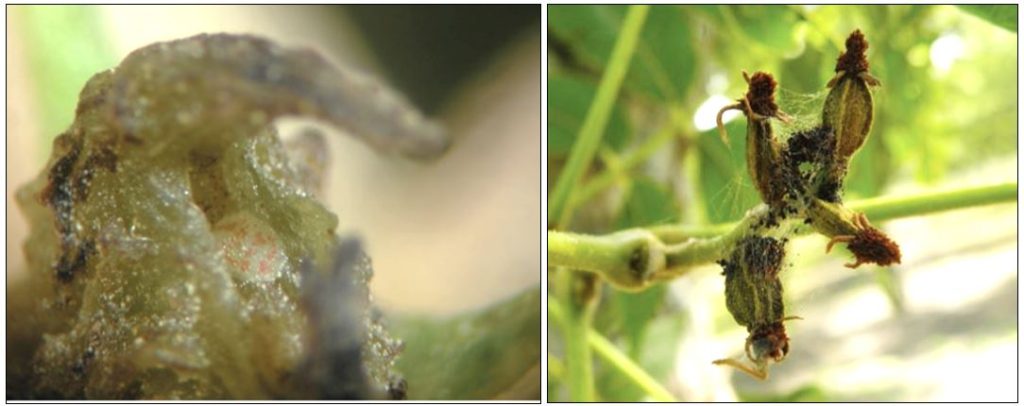As we are getting into the early nut development stage, the primary pest of concern for us is the pecan nut casebearer (PNC). Whether we consider PNC to be a serious pest or not, all depends on the crop load in that given year. In a year with heavy crop on the trees, a light infestation of PNC could actually be beneficial as caterpillars can thin out some nuts to reduce the load. But in a year like this, when we are expecting a relatively light or average crop, early nut drop caused by PNC infestation could be a concern.
Now the question is, in a light crop year, should we make an application for PNC? It is not a straightforward decision to make as it depends on the insect pressure. Only the first generation of PNC caterpillars damages the crop when nuts are pretty small. As nut development continues, the risk of PNC infestation also decreases and may not require a second application. However, the first generation of caterpillar damage can be serious as one caterpillar can infest several small nutlets on a cluster and can result in considerable nut drop early on. One way to estimate the PNC population pressure is the use of pheromone traps, which capture male moths. It is logical to think that while male moths are around, there must be female moths and some of those mated females will lay eggs. These eggs will eventually hatch and the young caterpillars will make their way into small nuts.
The moth captured on pheromone traps is an indirect estimate or indicator of the presence of PNC population in the orchard. To know if PNC could really hurt the crop, we should scout the nutlets or nut clusters for the presence of eggs or the caterpillars by closely examining, often using a magnifying glass/hand lens/loops. Especially, presence of eggs confirms possible infestation of PNC and risk of nutlet damage. Look for the eggs on the tip of the nutlets or webbing on the nut clusters (Fig. 1).

Fig. 1. Pecan nut casebearer egg on tip of a pecan nutlet (left), webbing and black frass from feeding on nut cluster (right). Photo courtesy: Bill Ree, Texas A&m University
Three years ago, we had a trapping program that included multiple counties and traps were managed or checked by a dedicated group of county Ag Agents or growers. We hope to continue this effort again starting in 2024. This year, we could not establish the program and therefore it is difficult to specifically tell the current status of PNC on pecan across the pecan-growing areas of the state. We only have a limited number of traps at the UGA Ponder Farm and based on those traps we are well into the time period (Mid-May) when there should be some eggs or early damage on nuts. In some of our traps, we have recently recorded 10 moths per week. A similar situation has also been shared by our Extension partner in Colquitt County, Jeremey Kichler. While we have recorded a good number of male moths on our pheromone traps, we have not seen any damage on the nut clusters yet. So, if you are concerned and planning on making an application for PNC, I would suggest inspecting a few nut clusters on your trees and seeing if there are any typical damage symptoms such as webbing and black granular mass (resulting from feeding). Please refer to the recommended insecticide products and their dose to be used for PNC management in Georgia pecan which can be found in the Georgia Pest Management Handbook.

Fig. 2. Along with pecan nut casebearer moths, pecan bud moth (right) and hickory shuckworm (left) moths are also get captured on pheromone traps. Identification of PNC should be easy based on the black line across the back of the moth as shown on the picture (right).
One last thing I want to share is that sometime PNC pheromone traps can capture two other moths, pecan bud moth and hickory shuckworm. Although they are similar, looking a bit closer you will notice the difference. Once you know the differences in appearance among these three moths, misidentification is less likely. Please see the pictures above where we have observed these two other moths along with PNC on the sticky liner placed on pheromone-baited delta traps (Fig. 2). Please feel free to reach out to me (abarman@uga.edu, Cell: 209-285-9810) or any of the pecan team members if you have questions.
